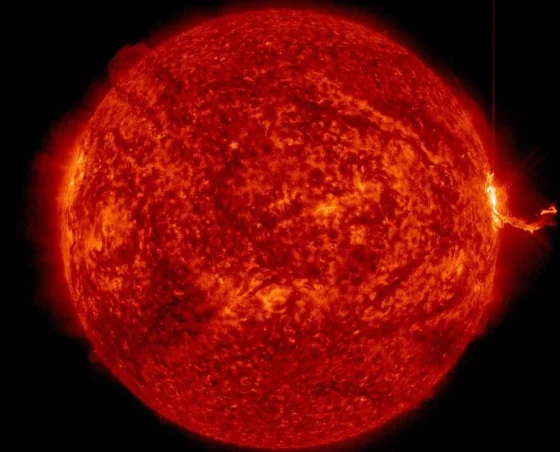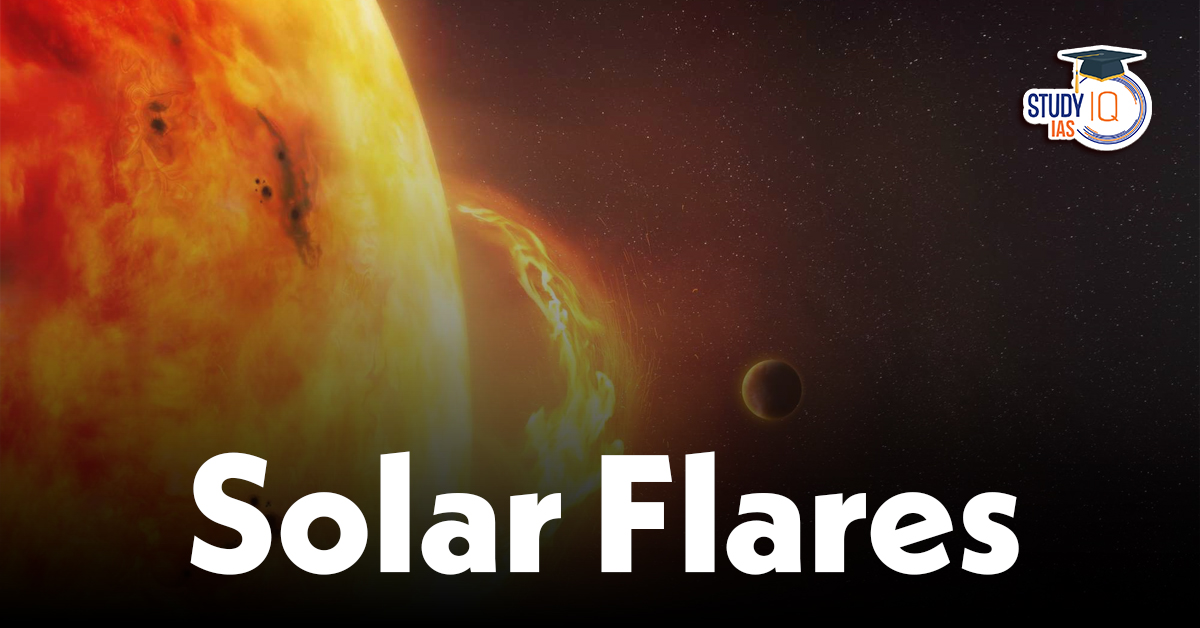Table of Contents
Context: NASA’s satellites have recorded a powerful solar flare.
What are Solar Flares?
- Solar flares are intense bursts of radiation caused by the sudden release of magnetic energy from the Sun. These flares emit high-speed particles and energy into space.
- Solar flares are often linked to Coronal Mass Ejections (CMEs), which are massive eruptions of plasma and magnetic fields from the Sun’s outer atmosphere (corona).
What causes Solar Flares?
Solar flares usually take place in active regions on the Sun, which are regions characterised by intense and complicated magnetic fields, typically accompanying sunspot groups. As magnetic fields change, they may become very stretched and twisted.
When the stress becomes too large, the magnetic field lines can abruptly snap and reconnect as a process of magnetic reconnection. This has the effect of unleashing a tremendous amount of built-up magnetic energy in the form of a wide range of electromagnetic radiation along the entire spectrum (from radio waves to X-rays and gamma rays) as well as energetic particles.
Classification
Solar flares are categorized according to their brightness in X-rays (in the wavelength of 0.1 to 0.8 nanometer) as observed by satellites such as NOAA’s GOES. Flares are classified by their strength:
- A-class: Weakest
- B, C, M-class: Moderate
- X-class: Strongest and most intense

- Flares occur more frequently during the solar maximum, the peak of the 11-year solar cycle during which the Sun’s magnetic poles reverse.
- Solar flares release energy across the entire electromagnetic spectrum, including X-rays, gamma rays, ultraviolet, visible light, and radio waves.
Recent Activity of Solar Flares
The Sun is in Solar Cycle 25 and is moving towards or at its solar maximum, a time of increased activity. This has resulted in a rise in solar flares and CMEs. For instance, in May 2025, sunspot regions such as AR4087, which are currently active, have emitted multiple strong X-class flares (e.g., X1.2, X2.7) and some M-class flares, generating significant radio blackouts in different regions of the world, including Europe, Asia, and the Middle East. Scientists are watching these events closely for possible additional effects on Earth’s technology and environment.
Impacts of Solar Flares
Geomagnetic Storms
Can disrupt Earth’s magnetic field, leading to:
- Radio communication blackouts
- Power grid disturbances
- Enhanced auroras (Northern and Southern Lights)
Satellite Vulnerability
High-energy particles can:
- Damage satellite electronics
- Disrupt GPS and communication systems
Human Safety
- Earth’s atmosphere and magnetic field protect us from harm.
- Astronauts and space missions are at higher risk due to increased radiation exposure.


 Places in News for UPSC 2026 for Prelims...
Places in News for UPSC 2026 for Prelims...
 Lake Natron: Location, Features, Wildlif...
Lake Natron: Location, Features, Wildlif...
 Erra Matti Dibbalu Added to UNESCO Tenta...
Erra Matti Dibbalu Added to UNESCO Tenta...

























